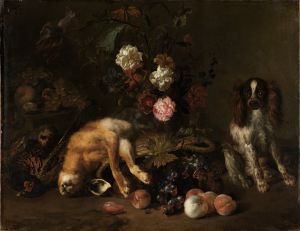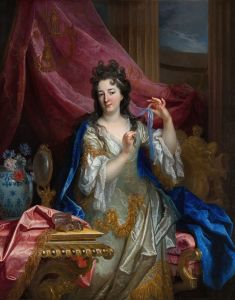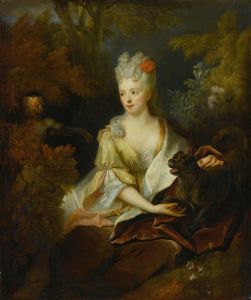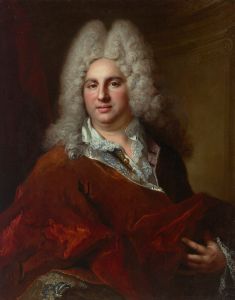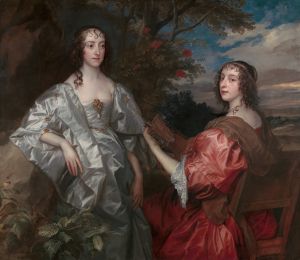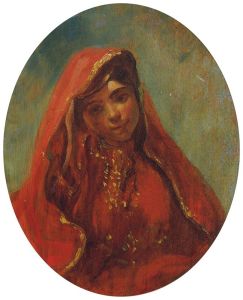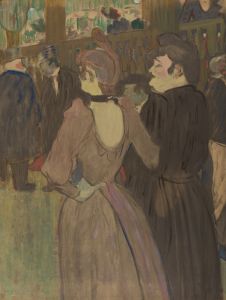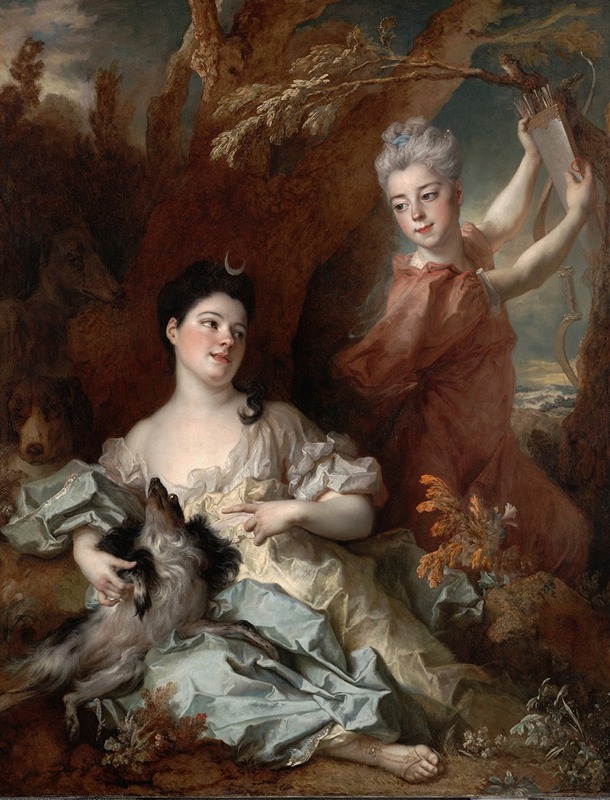
Portrait of the Comtesse de Montsoreau and Her Sister as Diana and an Attendant
A hand-painted replica of Nicolas de Largillière’s masterpiece Portrait of the Comtesse de Montsoreau and Her Sister as Diana and an Attendant, meticulously crafted by professional artists to capture the true essence of the original. Each piece is created with museum-quality canvas and rare mineral pigments, carefully painted by experienced artists with delicate brushstrokes and rich, layered colors to perfectly recreate the texture of the original artwork. Unlike machine-printed reproductions, this hand-painted version brings the painting to life, infused with the artist’s emotions and skill in every stroke. Whether for personal collection or home decoration, it instantly elevates the artistic atmosphere of any space.
"Portrait of the Comtesse de Montsoreau and Her Sister as Diana and an Attendant" is an exquisite painting by the renowned French artist Nicolas de Largillière. Largillière, born in Paris in 1656, was a prominent portrait painter of the late Baroque period, known for his ability to capture the elegance and opulence of the French aristocracy. His works are celebrated for their rich color palette, intricate details, and the ability to convey the personality and status of his subjects.
This particular painting, created in the early 18th century, is a testament to Largillière's skill in blending portraiture with allegorical themes. The painting depicts the Comtesse de Montsoreau and her sister, both dressed in the guise of Diana, the Roman goddess of the hunt, and her attendant. This choice of attire is significant, as it reflects the popular trend among the European nobility of the time to be portrayed in mythological or allegorical roles, which not only highlighted their beauty and grace but also suggested virtues such as strength, purity, and nobility.
Largillière's composition is masterful, with the figures positioned in a natural yet elegant manner. The Comtesse, likely the central figure, is adorned with a crescent moon tiara, a symbol traditionally associated with Diana. Her attire is luxurious, featuring flowing drapery that emphasizes her status and wealth. Her sister, depicted as the attendant, complements the scene with her own graceful pose and attire, creating a harmonious balance within the composition.
The background of the painting is equally important, as it sets the scene for the mythological theme. Largillière often employed lush landscapes or classical architectural elements to enhance the grandeur of his portraits. In this painting, the backdrop likely includes elements that suggest a pastoral or woodland setting, in keeping with Diana's association with nature and the hunt.
Largillière's technique is evident in the meticulous attention to detail, from the delicate rendering of fabrics and textures to the lifelike portrayal of the sisters' features. His use of light and shadow adds depth and dimension, bringing the figures to life and highlighting their expressions and gestures.
This painting not only serves as a portrait of two noblewomen but also as a reflection of the cultural and artistic trends of the time. It exemplifies the Baroque fascination with drama, movement, and the interplay between reality and mythology. Largillière's ability to capture the essence of his subjects while embedding them within a larger narrative is a hallmark of his work and contributes to his enduring reputation as one of the leading portraitists of his era.
Today, "Portrait of the Comtesse de Montsoreau and Her Sister as Diana and an Attendant" remains a valuable piece of art history, offering insight into the social and cultural milieu of 18th-century France. It continues to be studied and admired for its artistic merit and historical significance, reflecting the enduring legacy of Nicolas de Largillière's contribution to the world of art.






